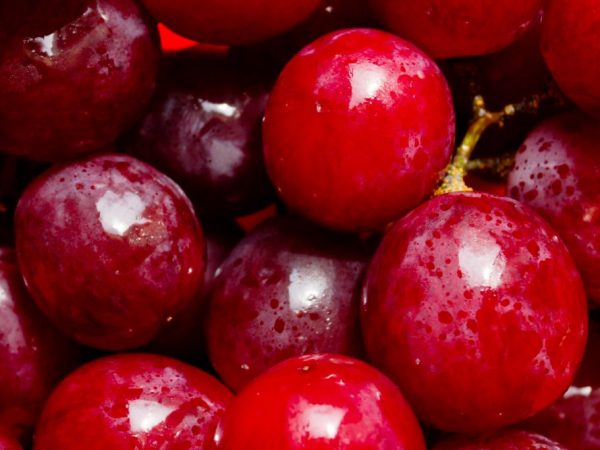Grape variety Bull's Eye
Grape Bullseye or, as it is also called, Senso bred by a French breeder. It is a thermophilic variety that thrives in hot climates.

Grape variety Bull's Eye
Variety characteristic
The Bullseye grape variety has an average frost resistance (it can endure up to -18 ° C) and belongs to the late ripening grape variety. Productivity of grapes Bullseye is high.
Description of the bush
According to the description, the bushes of the Bull's Eye grapes are tall, reaching 3-4 meters in height. Flowers bloom unisexual, self-pollinated variety. The leaves are dark green, large, rounded.
Description of the fetus
The fruits, according to the description, are tied large, massive, round in shape. One bunch of grapes can be harvested about 600-800 gr. fruits. The pulp of the berry is sweet and contains about 20% sugar. Leaves a sour aftertaste, mostly due to the rind. The berries are dark blue.
Growing varieties
The Bull's Eye grape variety is grown by seedlings in a specially dug hole. Layers of humus, superphosphate and wood ash are laid in it. The land is also prepared in advance by adding mineral fertilizers to it.
Landing in the soil
The plant needs a lot of light, an unshaded place is chosen before planting. Before planting, the root system is checked for diseases or damage. The soil is prepared in advance before planting - it should be light and nutritious.
Plant care
Bullseye grapes require the same care as any other variety. However, its difference lies in the fact that, among other things, the variety needs pruning in the spring and grafting.
Fertilizer
After planting in open ground, seedlings and soil also need fertilization. For feeding used:
- potassium;
- calcium;
- phosphorus.
Due to the lack of fertilizers and nutrients in the soil, the leaves of the plant will change, the quality of the fruit will deteriorate and the ability to set flower fruits will decrease.
Watering

Over-watering can ruin the flavor of the berries.
Watering for the Bull's Eye should be moderate to avoid contracting diseases. The procedure is carried out several times a week. Further, as it grows, watering is reduced. During the blooming of flowers, the Bull's Eye is not watered for 2-3 days.
Before starting the formation of ovaries, irrigation is also reduced so that the fruits are not watery.
Diseases and pests
According to the description, this species has a weak immunity to diseases. Due to an excess of moisture in the root system, bacteria or rot develops, which leads to the death of the bushes. Pests also frequently attack this variety.
Pest control
Chemicals and fungicides are used to treat pests of grapes.
Spraying preparations:
- Oxyhom;
- HOM;
- Abiga Peak;
- Fitospirin.
Treatment is carried out within 2 weeks. After spraying, the plant is cleaned of the affected areas.
Fight disease
Disease control uses the same treatments as pest control. All infected areas are burned, the plant is sprayed with drugs and fungicides. They also treat the soil, since most of the diseases in a plant are formed in it.
Prophylaxis
The best preventive procedure for grapes is to take good care of the bush. However, if the plant has already undergone the initial stage of the disease, then it is sprayed with not very harmful drugs, for example, Fitosperin.
Conclusion
Bull's Eye Grape is susceptible to disease and does not withstand frost. Plant care must be meticulous. However, the result is worth all the efforts, because the fruits of this variety are considered one of the most juicy in viticulture. Bull's Eye is used for making juices, drinks and dessert dishes.


